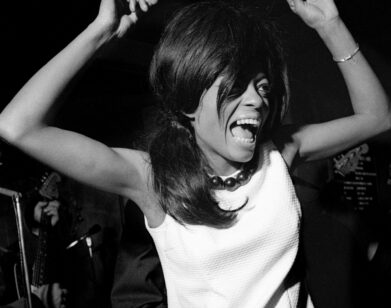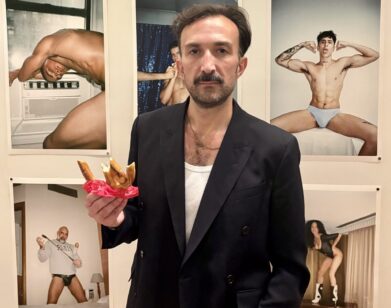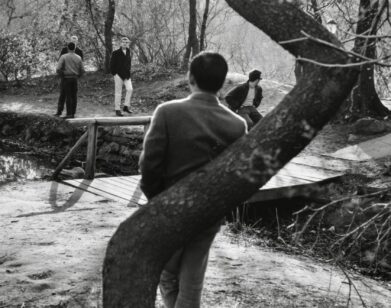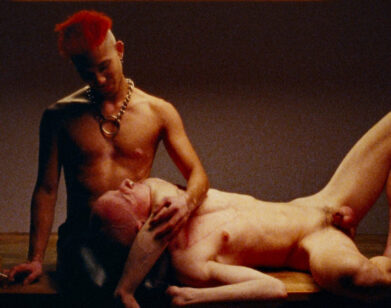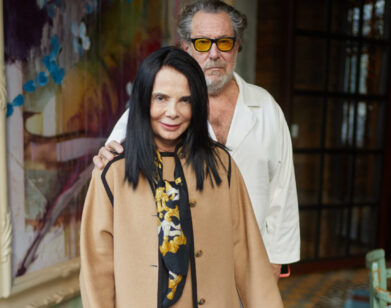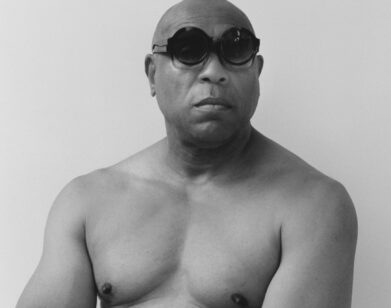Obama in the Suburbs
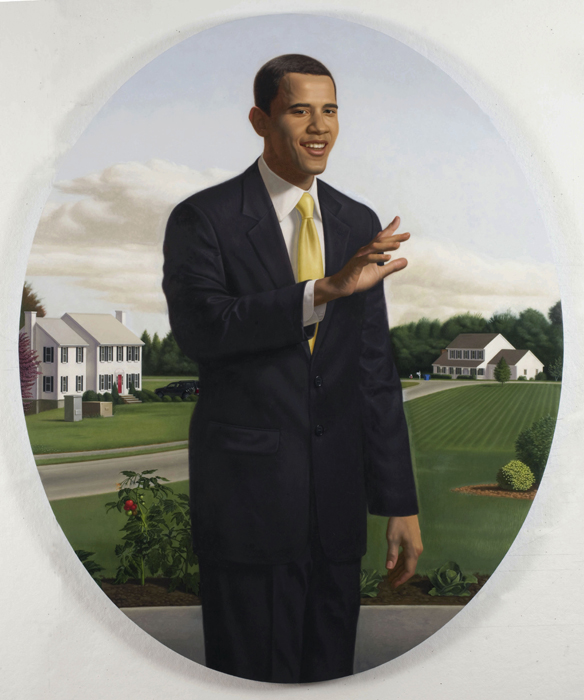
This month marks the publication of Art For Obama, an 184-page, Shepard Fairey-edited compendium of 150 reverential artworks inspired by the 44th President. Two images you won’t find in this tome are Kurt Kauper’s Barack and Michelle, which go on display this Saturday at Deitch Projects’ Grand Street gallery. In lieu of the “absurdly celebratory” (Kauper’s words) impressions of the first family—Fairey’s iconic Hope image or Elizabeth Peyton’s romantic Michelle and Sasha Obama Listening to Barack Obama at the Democratic National Convention August 2008—Kauper says he, “Liked the idea of painting ridiculous subject matter because I kind of like being embarrassed by [it], which means you’re working outside your comfort zone. And that can only lead to something positive.”
Unlike Peyton, who oftentimes confers a certain kind of grace on her subjects whom she clearly seems to adore (her 2001 portrait of Al Gore is titled Democrats are more beautiful), but who certainly seems to understands the confines of her genre, Kauper seems to find the business of painting celebrities, especially political celebrities, somehow discomfiting. So if he doesn’t quite knock celebrities of their pedestals, he makes those pedestals, a little lower, and a little more accessible. For his 2007 Hockey Player series, Kauper painted the athletes in campy poses, mostly in the nude and referencing the locker room, before bold monochromatic backgrounds. For Carey Grant, 2003, he depicted the romantic lead full frontal, tan lines highlighted by a hearth with a roaring fire.
The style for the Obama portraits, says Kauper, evolved from the Met’s 2006 Glitter and Doom exhibition of Weimar-era, New Objectivist German portraiture, the school of artists who abandoned the popular expressionist and surrealist styles for straightforward depictions of their subjects. In those artists he located an impulse to “return to a traditional method”; that effect, though probably intentional is one of “a strong irony, in that they point to a situation in the culture where traditional values are breaking down.” In the case of the Obamas, Kapuer says he was interested in presenting “polarized images… with what’s at first glance a very neutral, objective portrait of these two figures who were becoming so representative of polarized opinions.” In other words, no Obamas in the buff.
In fact, Kauper didn’t begin with the intention of painting unofficial presidential portraits at all. In the summer of 2008 he was painting quotidian landscapes—parking lots and suburban streets, a pair of which would later serve as the backdrops for the portraits—around his mother’s home in Sutton, Massachusetts. This is where the couple would touch down. “I didn’t want to put [Barack and Michelle] in a familiar situation,” says Kauper. Against these unremarkable backgrounds, the President and First Lady assume stilted stances like Barbie dolls and plastic, political smiles. Though Kauper says he likes and voted for Obama, the idea of presenting the First Couple as “synthetic creations” seemed the most compelling treatment to him. “I’d be stupid to fool myself to think he’s that much different from any other politician,” says Kauper, who shied away from saying if, or how many, nude versions of the first couple he might have locked in his studio. “I do have a nude drawing of Obama, but that was just to get the figure down.”
Barack and Michelle Obama opens at Saturday, October 3, 6–9PM. Deitch Projects is located at 76 Grand Street, New York.

